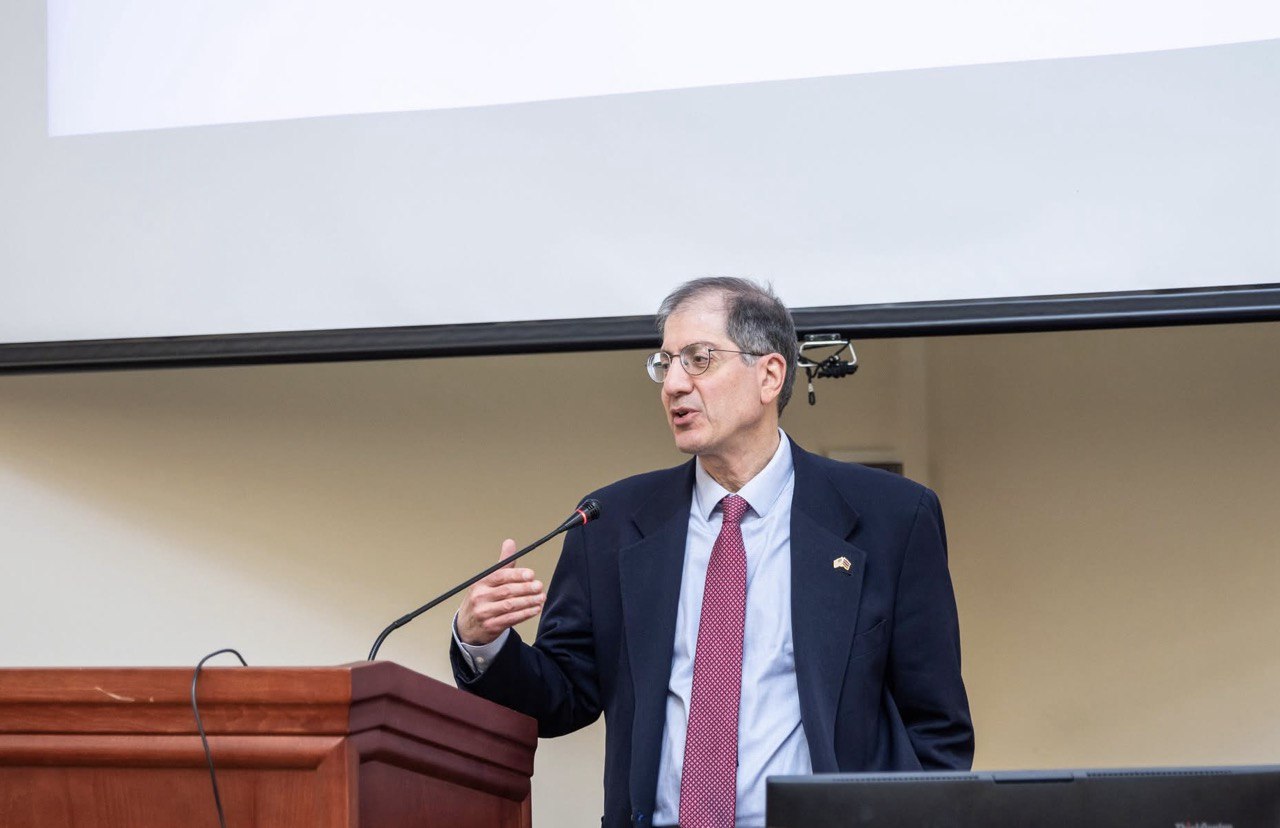Malignant mesothelioma was the focus of Professor Gregory P. Kalemkerian’s lecture at the Recent Developments in Thoracic Oncology in Armenia meeting. In his talk, he provided a comprehensive overview of the disease, combining epidemiological insights, the genetic underpinnings of susceptibility, and evidence from pivotal clinical trials. His presentation highlighted both the global burden of mesothelioma and its particular relevance in regions such as Western Armenia and Cappadocia, where exposure-related disease continues to be observed.

Background
Mesothelioma is a rare cancer, with about 32,000 new cases each year worldwide. The pleura accounts for the majority of cases (85%), followed by the peritoneum, pericardium, and tunica vaginalis testis
.Major risk factors include asbestos and erionite exposure, with Cappadocia being an endemic area. Professor Kalemkerian noted that Western Armenia is also relevant for exposure-related disease.
He highlighted the importance of germline BAP1 mutations, which he has seen in several patients. These mutations are associated not only with mesothelioma but also with uveal and cutaneous melanoma, renal cell carcinoma, and lung adenocarcinoma. Trials with PARP inhibitors and EZH2 inhibitors are ongoing, but so far, no targeted approach has shown clear benefit.
Prognostic and Predictive Role of Histology
Histology is both prognostic and predictive.
- Epithelioid tumors generally do better and respond somewhat better to chemotherapy
- Sarcomatoid tumors have worse prognosis but respond better to immunotherapy
Management of Pleural Effusion
Effusion is often the main cause of symptoms at diagnosis, and managing it is as important as treating the cancer. Options include:
- Tunneled pleural catheters, which patients can use at home once or twice weekly with low risk of infection.
- Pleurodesis, when the lung is not trapped.
- Pleurectomy/decortication, which can help lung re-expansion and symptom relief, though trials have not demonstrated a survival benefit
Surgery
Surgery should only be performed by thoracic surgeons with mesothelioma expertise. The goal is maximal tumor removal, though complete clearance is rarely possible.Pleurectomy/decortication (P/D) is generally preferred over extrapleural pneumonectomy (EPP).
- MARS trial: EPP showed no survival benefit, with outcomes favoring no EPP.
- MARS2 trial: P/D did not improve overall survival compared to chemotherapy.
- Retrospective studies also showed no advantage for EPP, with higher complication and mortality rates
Thus, the role of surgery remains unclear, though P/D may be valuable as a palliative procedure in carefully selected patients.
Radiation
Radiation is not curative and cannot safely treat the entire pleura. However, it can be effective for palliation of painful sites or areas where the tumor invades the chest wall.
Systemic Therapy and Key Trials
Chemotherapy for Malignant Mesothelioma :
- EMPHACIS trial: Cisplatin + pemetrexed improved survival compared to cisplatin alone, with response rates of 20–40%. This became the first FDA-approved treatment.
- Carboplatin + pemetrexed: Retrospective expanded-access data suggested similar survival and is often used in palliative settings.
- MAPS trial: Addition of bevacizumab provided modest survival benefit (~2 months), but toxicity limits use.
Immunotherapy for Malignant Mesothelioma :
- CheckMate 743: Nivolumab + ipilimumab improved survival compared to chemotherapy, especially in sarcomatoid/mixed histologies. This led to FDA approval in 2020.
- KEYNOTE-483: Pembrolizumab + chemotherapy improved outcomes, particularly in non-epithelioid disease, with modest survival benefit.
- BEAT-Meso: Chemo + bevacizumab ± atezolizumab showed no major overall survival difference; benefit was limited to non-epithelioid subgroups.
Across trials, the biggest improvements came in sarcomatoid tumors, while epithelioid disease showed little difference between chemo, immunotherapy, or combinations.
Conclusion
Professor Kalemkerian emphasized that the management of mesothelioma must be both multidisciplinary and individualized. In epithelioid tumors, chemotherapy continues to play a central role, offering effectiveness with better tolerability than immunotherapy. By contrast, sarcomatoid disease derives the most benefit from immunotherapy, which is now the preferred first-line approach in this subtype.
He noted that the role of surgery remains uncertain. While aggressive resections have not demonstrated a survival advantage, pleurectomy/decortication may provide meaningful symptom relief in carefully selected patients. Radiation therapy also has a limited role, but it can be highly valuable in the palliative setting, particularly for controlling chest wall pain or localized invasion.
Perhaps most importantly, Professor Kalemkerian stressed the need to focus on effusion management, since pleural effusions are often the primary cause of patient discomfort and poor quality of life.
Despite advances with immunotherapy and combination regimens, mesothelioma remains without a curative option. For now, care must center on tailoring treatment strategies to tumor histology and patient condition, while always keeping quality of life at the forefront.


